Students will learn about their own heritage by filling in an outline and then creating a poster.
- Subject:
- Social Studies
- Material Type:
- Lesson Plan
- Author:
- Utah Lesson Plans
- Date Added:
- 08/27/2021
Students will learn about their own heritage by filling in an outline and then creating a poster.

Students will predict possible consequences of substance use and analyze how social messages regarding the use of alcohol, tobacco/nicotine and other drugs may misrepresent the negative effects of each.
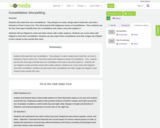
Students will create their own constellations. They will give it a name, design what it looks like, and write a backstory of how it came to be. This will be paired with Indigenous stories of constellations. Then, students use the Star Chart app to identify their own constellation and create a story that explains it. Students will use Flipgrid to create and share stories with a wider audience. Students can screen share with Flipgrid to show their constellation. Students can also import their constellations and other images into Flipgrid to have visuals as they narrate their story.
Students will understand the rights and responsibilities of buyers and sellers, the process of comparison-shopping, consumer protection laws, and agencies.

Students will be able to identify methods used by predatory lenders for prevention, comprehend basic consumer rights, and demonstrate knowledge of filing complaints when these rights are violated. Additionally, students will understand tactics employed by predatory lenders and be equipped with the skills to avoid falling victim to them.

This is a context clue lesson plan. It includes a pre-test and post-test and strategies to teach context clues.

This is a lesson plan that fits the core curriculum for 2nd grade social studies. Students will be able to identify and label the seven continents, five oceans, two poles, and the equator on a map. Thumbnail: "World Political Map." Gale Elementary Online Collection, Gale, a Cengage Company, 2020. Gale In Context: Elementary, link.gale.com/apps/doc/LJQVQK451405211/ITKE?u=onlinelibrary&sid=bookmark-ITKE&xid=c47a5c55. Accessed 31 July 2022.
Students will review cooking terminology discussed in Foods I using a packet and game. The students will also be participating in a knife skills lab.
Cooking terms

This lesson provides a way to help the students demonstrate coping behaviors related to grief and loss through using concepts and conventions of print to create text.
Students use the Cornell notes tool (developed by Walter Pauk from Cornell University) to do close reading of informational text.
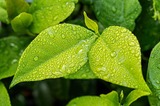
Students use the Cornell notes tool (developed by Walter Pauk from Cornell University) to gather key ideas, details, and summarize. The source used in this lesson is audio obtained from NPR about the novel Seedfolks by Paul Fleischman.Lesson Image: stevepb.(2015, October 23). Leaf Green [Photograph]. Pixabay. https://pixabay.com/images/id-1001679/

This lesson enhances vocabulary acquisition and learning about how the Earth rotates on its axis and revolves around the Sun by reading the story, "Cottontail Shoots the Sun," a traditional tale shared by the Ute Indian Tribe of the Uintah and Ouray Reservation. It also helps students become familiar with cultural storytelling and its importance in Native cultures. Students will have a brief introduction to the Ute Indian Tribe of the Uintah and Ouray Reservation, its location, and partnership with the University of Utah. Then students will particpate in the group reading of the book and a STEM lesson learning about observable patterns in the sky.
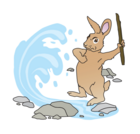
This lesson shares a Ute tale with students to help them to use illustrations to help clarify text details and sequence. The story is then used to help engage students in a discussion on bullying, how actions have consequences and what the characteristics are of a good friend.Background information gives teachers resources to help their students learn more about the Ute Indian Tribe of the Uintah and Ouray Reservation. The lesson is an integrated English Language Arts, Social Studies, Health lesson.
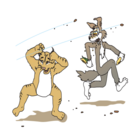
This is a Navajo tale about a character, coyote, tricking bobcat into stealing some corn. Coyote tales are traditional Navajo stories that have been told for thousands of years, passed along from family to family across the generations. As an integral part of the oral traditions of the people, Coyote stories have been used to instruct the young and as well as for guideposts to living a good life. Folded within the humor and misadventure, the listener/reader learns that the results of Coyote's selfishness, greed, tricks, and deceit are often painful and humiliating! Through repeated telling, children learn at a young age how to behave appropriately. Please respect the cultural observances for Coyote stories, books, DVDs, and audio recordings. Coyote tales are intended for the winter story-telling season only, October through February. This lesson could be used to support lessons on Fables, Tales and Native American Storytelling.
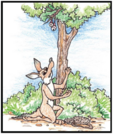
According to Goshute and Ute tradition, Coyote tales should only be told during the winter time. The tribes ask that the teacher use this lesson and story in the winter months. This lesson utilizes the Confederated Tribes of the Goshute (CTGR) tale, “Coyote Loses His Eyes” and the Ute Indian Tribe of the Uintah and Ouray Reservation (UIT) tale, “The Eye Juggler Coyote” to enhance comprehension skills and provide an introduction to comparing and contrasting plot, characters, theme and setting. The students will also be introduced to similarities and differences between the two tribes. Lastly, students will write a response summarizing using compare and contrast key words.Native peoples tell stories about Coyote and other animals to their children. Based on Coyote’s mistakes, the elders teach children about proper behavior and positive attitudes. The lessons taught help children to avoid making the same mistakes as Coyote and suffering the consequences in their own lives.
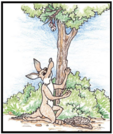
This is the detailed lesson plan. Students will be guided through the strategies included in reciprocal teaching as they read/listen to the Goshute tale "Coyote Loses His Eyes." based on the Goshute story booklet adapted by Kathryn Hurst and Cultural Consultants Genevieve Fields and Chrissandra Murphy. This story should only read told or read during the winter months. The Native American Indian Literacy Project was made possible by funds from the Utah State Office of Education (USOE). It is a joint effort of the USOE and San Juan School District Media Center.Lesson Plan Author: Patricia Helquist

This tale's main character is Coyote. Many Native peoples use Coyote stories as a means of teaching morals and lessons. This story is a humorous story where Mouse is the trickster and Coyote is the object of his trickery. "Coyote and Mouse" is a humorous trickster tale of the Shoshone. The is a lesson grossology or scatology? This is a lesson on animal SCAT!
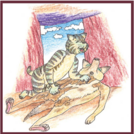
The Ute Mountain Ute people are one of three Ute tribes living in southeastern Utah and southwestern Colorado. The Ute Mountain Ute tribal headquarters are located at Towaoc, Colorado.Stories with morals, like “Coyote and Bobcat,” were often used by the Ute Mountain Ute people to teach their children about proper behavior and the consequences of their own actions. Coyote tales are only told during the winter time.
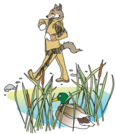
Coyote tales are part of the Paiute oral tradition used to teach proper behavior and values from an early age. These stories are only told during the winter time. The Coyote illustrates the mischievous nature in all of us. This lesson the Paiute tale, Coyote and Duck to enhance comprehension and prediction skills of students. It also helps students become familiar with cultural storytelling and its importance in Native cultures. Students will have a brief introduction to the Paiute Indian Tribe of Utah (PITU) and its location in Utah. The lesson includes a discussion about Native American regalia and explicitly addresses stereotypes.